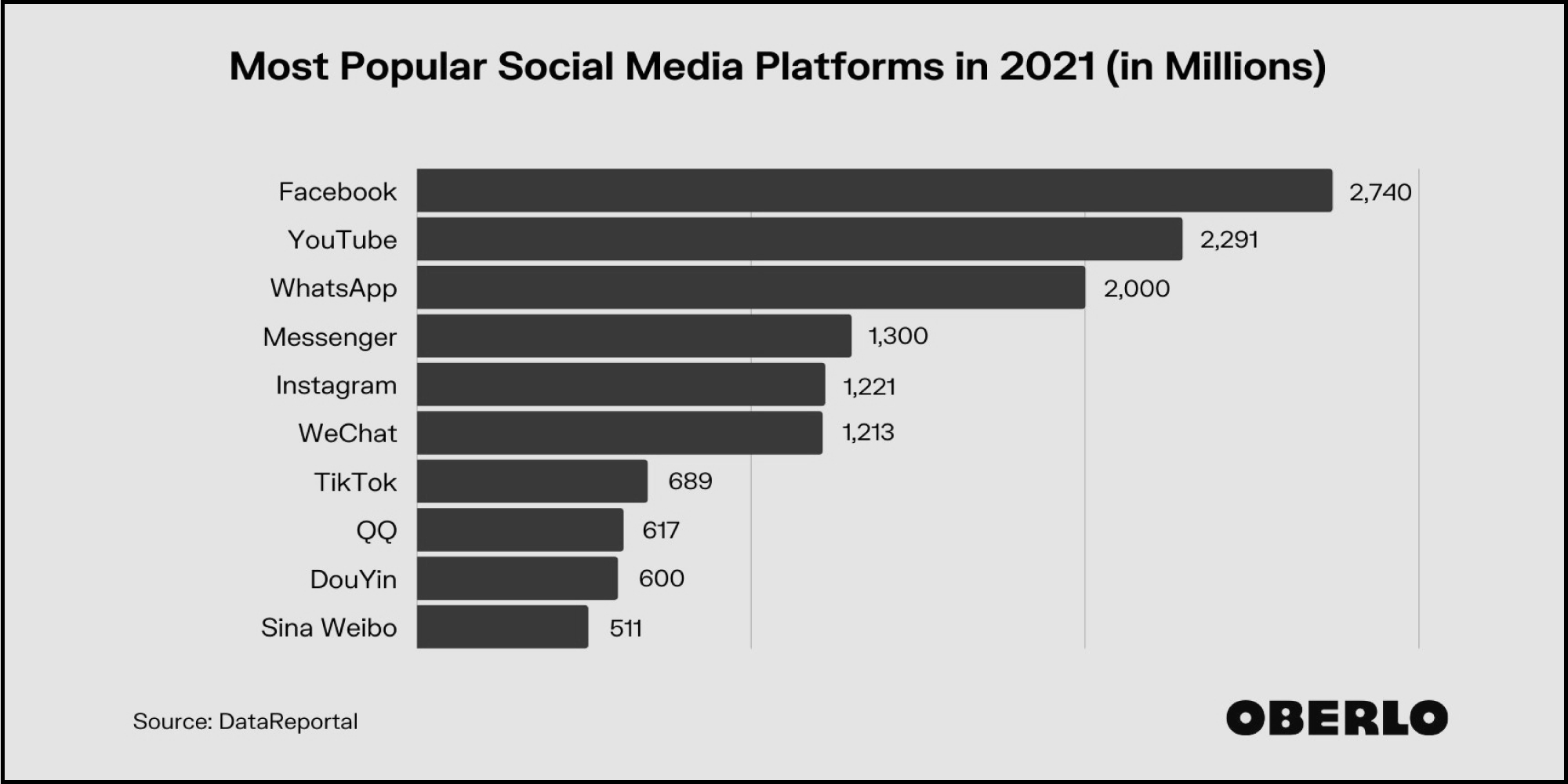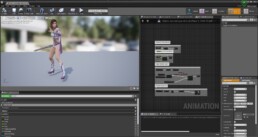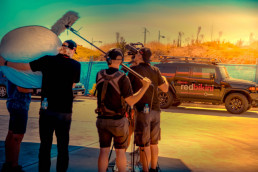7. Distribution | 7 Essential Steps To Successful Video Production
In this seven-part blog series we’ve detailed the steps required for successful video production and how it works to maximise your marketing opportunities. Having already delved into strategy, scripting, pre-production, production, editing and animation and finishing and delivery, we’ve arrived at the final step – distribution. Essentially, this part is about getting your video in front of the audience you uncovered back in the strategy stage and how to ensure you keep them in order to get a return on the investment put into creating your content.
-
VIDEO KILLED THE RADIO STAR
There’s no denying the power of video content. In this day and age, video has become the favoured way to inform and entertain audiences, trumping the written word and still images. You only need to look at the proliferation of streaming and online platforms such as YouTube and TikTok, which are geared toward content and content delivery, to see the power of video. Everyday people like you and me are dominating the world wide web, with tens of millions, even hundreds of millions of followers and earning a comfortable living all because they found a niche in the market and successfully promote themselves.
Just how powerful is video? Well, all social media platforms have become video content platforms. In fact, three years ago Facebook – once the ruler of social media – announced that it was no longer a social media platform but a video platform.
And although the technological landscape is forever evolving, the one constant is video, and it plays a super important role with consumers and the business community. In some instances, the mere mention of video can increase email rates, meaning if the email subject line contains the word ‘video’ research has shown that people are more inclined to open it because of the promise of easily digested content.
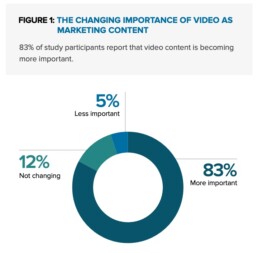
So how do you get your video in front of audiences? Well, for your video content to be truly effective and provide a return on investment, you need not only a good video strategy, but a sound distribution strategy too, so that you meet your marketing goals. You can have the best content in the world, but if you can’t get it out there into the world, what’s the point? It’s a waste of time, money and resources.
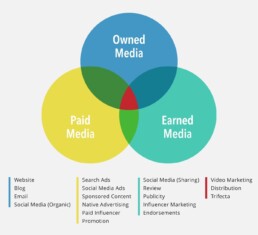
-
START AT THE BEGINNING
First things first, your distribution strategy begins with your viewers. Whether your intended audience is business to business (b2b), business to consumer (b2c) or business to government (b2g), you need to know where to find these viewers – your buyers – and understand what is the best content to put in front of them in each environment. This is something you would have covered in the strategy component of video production.
As an example, it could mean producing various durations of your video content, but even bigger than that, it is about having an understanding of the entire customer journey. This is far more involved and complex than simply finding people, putting a video in front of them and watching the money roll in. No. There are many steps involved, such as attracting your audience’s attention, engaging with them, getting them to take some form of action be it providing an email address when they visit a landing page, and finally continuing to nurture them so they become customers – loyal ones.
Each step of the content distribution process requires a different approach. At the beginning of the journey, your distribution may be far and wide and varied, but you then want to focus it down so you can control the information you obtain, such as email addresses and databases, and then re-market it in order to bring your costs down and make the audience more targeted. It is far more important to have purpose-built content for each stage of the customer’s journey, and it’s important to note that attraction content is different from engagement content and again different from nurturing content. Learn these differences.
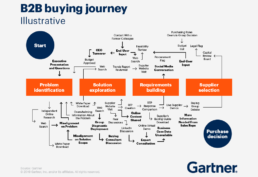
-
THE POWER OF REACH
In 2021 the power and abilities of digital platforms to deliver content to precise audiences is better than ever before. All of the available online tools such as social media, media buying and advertising platforms are incredibly useful to businesses and when combined with an effective distribution and creative strategy can deliver a huge return on investment. That being said, success comes with the proviso that every part of the process is done correctly because even the slightest error can lead to a diminished value.
So, what do you need to do? Take the horse by the reigns, take charge, be proactive and always think one step ahead. In a nutshell – do everything you should be doing. It may sound complex, but the key here is to just do it. If someone is taking the time to visit your website, you need to make sure you re-market to them so they become loyal to you. If you spend all your time creating great content and building your database but then don’t follow up and nurture that audience, then essentially, you’ll fall at the last hurdle and all those previous efforts would have been a waste of time. It’s about making sure every step is working properly and every single cog is turning, and this is where the experts such as the team at redbikini can help.
redbikini, which specialises in marketing strategy, concept development and scripting for video, established a new and exciting arm to their business in 2020 – specialist B2B marketing company, Loop.
Born and bred in South Australia, Loop, which purely targets SMEs offers clients a full range of services, including strategy, content, delivery, measurement and automation in one package. And the best bit is that the cost is almost certainly lower than if you decided to do it yourself.
Here at redbikini we live and breathe all things video production, offering more than 20 years’ on-set experience. We are experts and passionate about what we do. From quick social, to web or online videos, training videos, animated videos, corporate videos, promotional videos, sales videos, product launch videos, event videos, and TV commercials to long form television programs and documentaries. You name it, we do it.
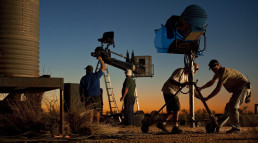
A one-stop-shop, redbikini’s full service offering as a video agency includes pre-production, logistics, location scouting, casting, scheduling and more, and we’re only a quick phone call, or email, away from providing our expert advice and guidance.
Follow our blog to stay up to date with the latest from redbikini.
GET IN TOUCH
6. Finishing and Delivery | 7 Essential Steps To Successful Video Production
Our seven-part blog series detailing the essential steps to help nail your video content marketing is nearing the end.
Having already covered strategy, scripting, pre-production, production day and editing and animation, we’ve arrived at step 6 – finishing and delivery. You’re so close to seeing your masterpiece in all its shining glory!
What exactly happens at this stage?
Well, finishing, as the word suggests, is about completing your video, adding those final touches and the art of finesse. You’re at a significant point in the process – fantastic script, a successful shoot and raw material that’s been edited into a storyteller’s dream. Now it’s time to add the last bit of polish to make your video shine.

First things first, this is still a stage where some technical steps need to be followed before your video masterpiece is complete and ready to be shared with the world.
-
GRADING
Like photoshop but for moving images, grading improves a picture’s overall quality through performing adjustments, such as lighting, on it. The amount of grading required depends on the project, as some will require more than others. Some projects might feature content derived from various sources (such as different businesses) or that were shot at different times or using different cameras, which might mean that features such as skin tone, lighting, and overall film quality seem ‘off’. However, the beauty of the grading process is that it provides editors with an opportunity to make the overall finished product look and feel consistent.
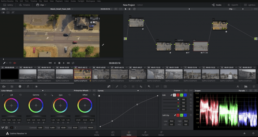
2. SOUND MIX
This is where every single sound element in your project is mixed to maintain its overall prominence without overtaking other audio files used within the video. This part of the process could also include sound design, which can occur at this, or an earlier editing stage.
What is the difference between sound design and sound mixing?
In a nutshell, sound mixing is a technical element, while sound designing is the pixie dust added to enhance the overall project. Sound design is all about combining audio aspects such as sound effects and music to improve your project. In contrast, mixing is about balancing it out ad equalising so that audio is at the right level.
For example, sometimes footage shot in slow motion is done without audio, so sound needs to be added afterwards to bring the scene to life.
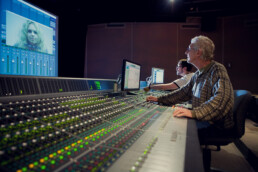
3. VERSIONING
In the next part of the finishing process, versioning is particularly important if your project is bound for delivery to another country. It might mean changing the voiceover, creating subtitles or altering motion graphics in another language. However, this would often be discussed in pre-production to make the versioning process as cost-effective as possible.

4. DELIVERY
There are as many different places to showcase your video in today’s technology-driven age as there are ways to make it. And that’s a lot. Social media, shopping centres, digital signage at sporting events, TV – get the drift? But it’s important to note that each of these mediums has specific requirements on how your video is delivered to ensure quality viewing.
The main elements to consider are the aspect ratio, meaning the size and shape of your screen, as some formats may require square video or Ultra HD, some may be short in height or on the other end of the scale – cinema screens. Again, this is something that would be discussed in pre-production so that the footage will work in whichever way it is executed.
At the finishing stage – but often discussed at pre-production – the editors could also be asked to provide a cut version of the video to suit other mediums.
5. FORMAT
Another factor to consider during the delivery stage is the format your video could be required in to suit other mediums. This will involve technical aspects such as pixel dimensions, codec (file type) and file size. As an example, for cinema, video files need to be in a super-high-quality format or Adobe to enable projection on the screen.
6. APPROVALS
There are also processes to go through for your content to be given publishing approval. Television commercials, in particular, need to go through an approval process (similar to a rating process), called ClearAds, to be given a classification, which determines what sort of programming they can be shown in. This is particularly important if the subject matter is sensitive. In these instances, pre-approval can be sought at the script stage of video production to ensure the content is valid and verifiable.
CONCLUSION
In a nutshell, the ‘finishing and delivery’ stage of video production is about polishing your video before showcasing it to the world. Look at it like being ready to apply hairspray over your up-do but still having an opportunity to add some more curls or change the style if you want. In this instance, hairspray is sound design, sound mixing, colour grading, and other technical aspects such as file type and size. These are all critical steps to takes your video to the next level as it gets closer to publishing. Speaking of which, you’re almost there – next up, we’re talking all about the distribution of your masterpiece.
Here at redbikini, we live and breathe all things video production, offering more than 20 years’ on-set experience. We are experts and passionate about what we do, from quick social, to web or online videos, training videos, animated videos, corporate videos, promotional videos, sales videos, product launch videos, event videos, and TV commercials to long-form television programs and documentaries.
You name it; we do it. A one-stop-shop, redbikini’s full-service offering as a video agency includes pre-production, logistics, location scouting, casting, scheduling and more, and we’re only a quick phone call, or email, away from providing our expert advice and guidance.

Follow our blog to stay up to date with the latest from redbikini.
GET IN TOUCH
5. Editing and Animation | 7 Essential Steps to Successful Video Production
In previous posts of our seven-part blog series, which details the essential steps to help ace your video content marketing, we have so far covered strategy, scripting, pre-production, production and finishing & delivery.
Now with step 5, we examine editing and animation.
By this stage, you should have all your raw footage – or rushes as they’re known among film buffs – and it is now time to piece it all together into a semi-finished product. This is where all the pieces of a puzzle come together, and you’re starting to see the bigger picture – the excitement is building! But before you start, there are still some crucial steps to take to ensure your video is picture-perfect.

1. REDEFINE YOUR PURPOSE
Now is an excellent time to go back over your strategy and remind yourself of the project’s purpose so that this logic is at the forefront of all decisions being made. It’s important to remember and define who your target audience is and what environment the video will be viewed, as this will influence the editing style to fit the audience you are attempting to engage with. When you have a clear purpose in mind, it’s easier to produce content and know what you want to be included or cut.
At this stage of video production, you’ll be selecting how you want the shots featured, and there is a range of editing styles to choose from. For example, the footages can be edited to be long and immersive or super-fast, i.e., less than one shot per second – it all depends on whom you are targeting and what message you’re trying to convey.
2. TIMING IS EVERYTHING
While some people are happy to sit around and watch hours of TV or movies in one sitting, the same can’t necessarily be said when viewing videos that market a business, brand, company or product. Essentially, you’ve got a small window to engage and captivate your audience and the adage ‘less is more is a good one to keep in mind. When editing your raw footage, it is essential to consider the video’s overall duration and remember that timing is everything. A general rule of thumb – if you think it seems too long, it probably is – brevity is critical.
While you know the strength of your brand, it is essential to understand that there is a vast amount of competing content online in today’s technology-driven era, and it’s all vying to engage with your audience. Your audience is surrounded by hundreds, even thousands, of competing videos attempting to entice them, so if your content isn’t immediately engaging, they’ll simply move on, and you’ll have lost an opportunity.

3. THE ART OF EDITING
While mobile phones and other devices have come a long way in recent years and enabled users to become somewhat amateur filmmakers, the art of editing is serious business and one the experts have studied long and hard to master.
Editing takes place on a computer editing station, which is super-fast, has a massive amount of fast memory, and costs a pretty penny. In a nutshell, the faster the computer, the faster the memory, the quicker the editing. There are as many editing styles and techniques as there are filming techniques and hundreds and thousands of ways of cutting material.
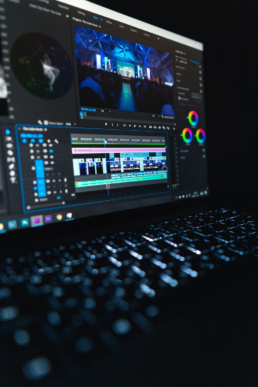
The process begins by inputting all the raw footage into editing software, followed by creating a content pass. This essentially is a rough draft, or rough editing, where your video will have a beginning, middle and an end and tells the story. This is usually the first time a client will see some of what’s been shot. If there are interviewees, they’ll all be featured, and if there is a voiceover, then that audio is laid down along with any relevant picture content.
At this point of the video creating process, many decisions are needing to make to identify what fits best, what works, and what doesn’t. It is a process of going back and forth and finessing. The first content pass is longer than the final cut, but this is an opportunity to understand what you can expect to see as a finished product. This will be a version of the video that doesn’t necessarily look pretty but gives you a basis and lays the groundwork.
Next comes the process of creating a visual pass, which takes all the overlay material, and in some instances, graphics and animation to bring the video to life. The two main options with animation are 2D and 3D, with 2D being far more straightforward as it is working within the flat framework of two-dimensional space. 3D animation, on the other hand, is far more complex because it is bringing in a third dimension, and visuals take on shape. If you are looking for something photo-real, i.e., realistic looking, the level of complexity goes up a notch again. Lighting, textures, and other environmental factors come into play to achieve a realistic result. While the process is incredibly time-consuming, when done well, it is extremely effective and engaging.
During the editing process, the process with both 2D and 3D starts with a design phase, including a non-animated version of the animation, to allow the client to see what the finished product will look like before it is completed. Once the design is finished, a wire-frame version is done to showcase how all the elements will move. You are now closer to a finished product.
4. Motion Ready
The last part of the editing process is adding motion graphics, which is often 2D animation incorporated with live-action footage that has been filmed. Motion graphics enhance what the viewer sees and drive the message home by highlighting certain aspects in a frame. They are also highly effective when hearing audio is compromised, such as at a busy shopping centre, an expo or tradeshow. Graphics can contain central messages and are a great tool because people can still understand the video’s essence even when they can’t hear what’s being said. They are attention-grabbing and can bring a dull corporate vision to life in an entertaining way.
5. Conclusion
Editing is a fascinating stage of video production because it means the finished product is within reach; there’s light at the end of the tunnel. It’s a stage that allows creative juices to flow, but it’s important to remember that post-production editing requires creativity and technical knowledge. Having great footage is just one aspect of the process; piecing it all together to tell a story effectively and engaging an audience is another.

Follow our blog to stay up to date with the latest from redbikini.
GET IN TOUCH
4. Production | 7 Essential Steps to Successful Video Production
So here we are, it’s Production Day
You’ve followed the steps to get here (click here to read our previous blogs on how to attain video production success) to help make the process as smooth as possible; there’s a strategy for the video concept, a script has been written and the all-important pre-production preparation is done. You’re ready to go and finally see your vision come to life.
This is an exciting stage, but it can also involve long days with potential hiccups along the way, so it is imperative to dot the i’s and cross the t’s to ensure smooth execution for the video production process.

THE STAR OF THE SHOW
As the client you’re the star of the show and it’s important you are presenting yourself in the best way possible. This is your big chance to showcase what you or your business is all about.
- Are you and your staff wearing your uniforms correctly?
- Is your branding on display?
- Have you got the props you want?
- If you’re shooting at your workplace, is everything in order?
Production days can be full on and exhausting, as well as expensive. Time is money and it is important to maximise any opportunities you have to showcase yourself in the best light on the day, it’s not as simple as trying again tomorrow or next week as this might be your one opportunity. Get it right the first time.
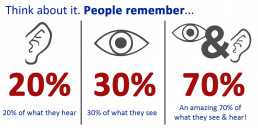
TAKE THE HORSE BY THE REIGNS
Maximise any opportunities that come your way and keep an eye out for any unexpected opportunities to create good visuals. Sometimes you just don’t know what you’ll be presented with until the day of shooting, regardless of how organised you are. Having a flexible creative approach to the day will work in your favour. Maybe the weather has suddenly turned, or your talent is having an off day – you just have to work around this. Think how you can turn a negative into a positive.
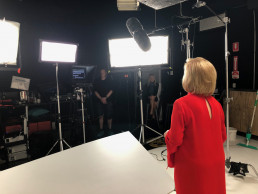
TIME IS OF THE ESSENCE
Two key points – stick to a schedule and view lists as your best friend.
Have a list of all the shots you want/need to get. That way, if any unexpected problems arise you know where you’re at and what still needs to be done. It will help keep you on track. If time starts getting away, you could miss out on important shots, but if you keep to a schedule as best as you can, it will help ensure a smooth run on the day.
Another good tip – keep moving. If problems arise, find a solution. Your talent might show up late, or not at all, but this doesn’t mean you should just sit around doing nothing. There’s always work to be done. Refer to your list to keep you in check but be flexible and keep moving so you can get the rest of the shots you need or new ones that spring to mind.
COMMUNICATION IS KEY
Effective communication can make the world of difference whether a project involves a bunch of people or just two. It is important to have open communication with the crew, on-camera talent, and anyone else involved in the project so that everyone has an understanding of what you are aiming for, what they need to do, and what to expect. Don’t catch people by surprise by keeping quiet, and don’t sit back if you’re not happy with how things are going.
- This is the time to speak up, not when everyone’s packed up and left.

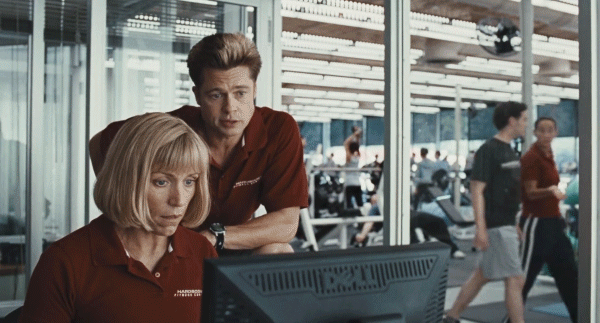
WATCH THE MONITOR
While it’s easy to watch what is happening before you with your ‘own eyes’, it’s important to note that’s not what is actually being captured by the camera during filming. Watching the monitor will give you the best indication of the footage you’ll see, because that’s exactly what is being captured. And given this might be your only chance to get footage, you need to be happy with what’s being shot because it’s not something you can easily change six months down the track. Remember, eyes on the monitor.
PAPER TRAILS
There is plenty involved with video production, but one of the most important things to do is ensure the paperwork is getting done. Quite often you’re working with unpaid talent and locations that don’t belong to you so it is imperative to have all the relevant release forms and documents signed, including any required permits to avoid any issues with filming. For example, you need permission to film at someone’s private residence, and even some public locations. You want to be prepared just in case someone shows up on set questioning why you are there or what you’re doing. You can put them – and yourself – at ease by ensuring all the relevant paperwork required is on set and can be pulled out to show those asking questions.
LOOK AFTER YOUR PEOPLE, AND YOURSELF
Filming days are generally long days. It’s not uncommon to do 10-to-12-hour shoots with early starts and late finishes, especially when you’re wanting to film at sunrise or sunset during the summer months. Ensure you provide a good supply of water, food and coffee to keep energy levels up. Look after the crew – and yourself – otherwise they start to fade and mistakes are made at your expense. Feed, caffeinate and hydrate.
And there you have it, our ‘must-knows’ that’ll have you well-equipped for a successful production day – go forth and shoot!
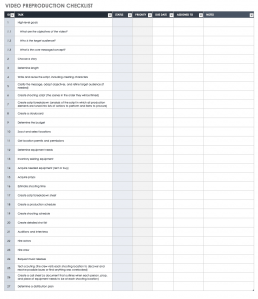
In summary, production day is an opportunity to showcase yourself or your business in the best possible light. To make the most of the opportunity, being presentable, using initiative and your time wisely, being organised but flexible, communicating effectively, dotting your i’s and crossing your t’s, and coffee (lots of coffee), will work in your favour.
Here at redbikini we live and breathe all things video production, offering more than 20 years’ on-set experience. We are experts and passionate about what we do. From quick social, to web or online videos, training videos, animated videos, corporate videos, promotional videos, sales videos, product launch videos, event videos, and TV commercials to long form television programs and documentaries. You name it, we do it. A one-stop-shop, redbikini’s full service offering as a video agency includes pre-production, logistics, location scouting, casting, scheduling and more, and we’re only a quick phone call, or email, away from providing our expert advice and guidance.
We explore this aspect more in the next blog post of this 7-part series, as we enter into chapter five of video production: Editing and Animation
Follow our blog to stay up to date with the latest from redbikini.
GET IN TOUCH
3. Pre-Production | 7 Essential Steps to Successful Video Production
Roll up, roll up, rolling! Before the exciting step of ‘Lights, camera, and action’ of video production, there’s people, places and things.
In previous posts of this blog series, we discussed the strategy and scripting stages of video production, (click here to read our previous blogs on how to attain video production success) and while it’s almost time to grab the camera and start rolling, there are still things that must be organised before the director can yell ‘action!’
In this blog we break down the importance of pre-production; the people and the roles required to make the filming process a success. After all, the show won’t go on without planning and practice – as well as a strong marketing strategy to pique audience interest. Naturally, there will be unexpected moments so being adaptable will work in your favour, but to ensure the smoothest run of events possible, organisation is key. Here’s what you need to consider:

PEOPLE
There’s more to the video production ‘circus’ than just a trapeze artist being the wow-factor. It’s the behind-the-scenes action you don’t necessarily see, which helps make the show spectacular.
Who is involved, and what do they do?
Director: The ringleader of the show, the director makes the creative decisions and decides what the audience sees. Well-versed in the technical and visual aspects of making video, the director has to consider budget, strategy and scripting, and works closely with the client, and crew, which includes producers, camera operators and talent.


Producer: A managerial role, the video producer is a true juggler. Working closely with the director and crew, they are in charge of devising and maintaining the budget, writing the script, hiring staff, organising talent, booking the filming venues, and editing.
Camera crew: The camera crew bring the director’s vision to life. They are responsible for capturing the raw material ready for the editors and animators to turn it into the sky-diving act. In pre-production, the types of cameras required to achieve the desired shots must also be organised, so that they capture everything the script stipulates, be it the talent, product or scenery.
Editor/Animator: The lion-tamers of the show, editors and animators wrangle the raw footage into picture lock. Following the video script and any changes that may have occurred during filming, an editor’s job is to piece together the footage. Both the editor and animator need to be organised in the pre-production phase and briefed on the desired result, so they can work out the best way to achieve it. More complex animation, such as 3D architectural renders and cinematographic scenes, will require a lead animator and a supporting team, as well as additional storyboarding to achieve the desired design elements and style, which can range from flat cut-out characters to hyper-realism. The script is very important here, as voiceovers determine the timing for the animation of spoken words provided by the talent.
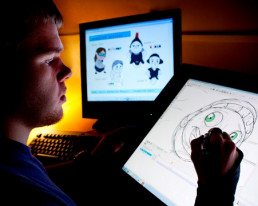
Cast/Talent: The cast and talent are the fire-breathers and trapeze artists of the production, bringing the script to life. The talent will vary depending on the type of video being made; for example, consisting of client staff and customers, members of the public, or professional actors. Video production companies such as redbikini can put out casting calls to scope talent from acting agencies and casting directors. With the director, producer and often the client present, a casting session can be arranged with a script reading to select the best cast for the video.
Essential liaisons + extras hands: Not every video will require a full crew, but those featuring live-animation and large or intricate sets, for example, will often require an art department to achieve the desired aesthetic vision. For music videos and voiceovers, sound production will likely be required for the best audio quality. Writers can assist or be in charge of the script, makeup artists and costume designers may be necessary for more theatrical productions, and production assistants are that extra pair of hands that help make lighter work, operating auto-cue or simply keeping everyone caffeinated to keep the day moving smoothly.
PLACES
There’s no circus without a striped tent, which of course means sourcing a location. The same goes for filming, and locations must be agreed upon and booked pre-production. This process can include:
Site visits: Scoping the location for any test shots required. In this process, if there is anything inhibiting filming ideas, it allows time to edit the script, find an alternative shot solution if necessary, or search for a different location.
Booking and permissions: Securing the location is crucial, as is getting permission to film there. Should you be using drone cameras, not only does your drone operator need to be qualified, you may also need clearance to film in the area.

THINGS
From flame throwers to costumes, camera gear and thematic props, ‘things’ are that which will be present in the video production– and again, these must be organised in pre-production. Think cameras and their corresponding accessories, lighting, green screen, wardrobe and makeup, hand-held props, auto-cue. Even catering gets a mention – it’s a big working day, and it is imperative to plan ahead so you’re not caught short.
Pre-production is the background hard yards that tie the strategy and script to production. Check out our favourite examples of what can be achieved through clever and thorough pre-production in our latest reel – featuring sky-high locations, animation, broadcast-style shoots, and more:

HERE From the Director to cast and everyone in between, redbikini’s talented team offers everything you need to create a professional, polished video. Whether you need a video production company to help you script, produce, direct, budget, cast, film, edit, or animate your video, redbikini can deliver a detailed strategy to lead you to success. Meet our Team here.
Check out the other posts in this blog series providing you with all the tools for successful video production. In our next blog about Production, we’re rolling — chookas!
Follow our blog to stay up to date with the latest from redbikini.
GET IN TOUCH
2. Scripting | 7 Essential Steps To Successful Video Production
In the previous post in this video production blog series, we uncovered Strategy: the crucial set-up for successful video production.
In the business of video production, many directors have had their say on the importance of the script. It’s The Script. If you can’t hear the capitalisation and italics when you say it out loud, you’re not placing enough importance upon this step; it’s the second essential step to successful video production.
“You can’t fix a bad script after you start shooting. The problems on the page only get bigger as they move to the big screen,” says Howard Hanks.
Alfred Hitchcock agrees, “To make a great film you need three things – the script, the script and the script.”

So why is it, as Frank Capra elaborates, “the toughest part of the whole racket… the least understood and the least noticed”?

Despite their advice and emphasis on the importance of scripting, this crucial part of the video production process is still overlooked.
Perhaps with the amount of misinformation and abundance of resources for DIY video production, the pro’s advice gets swept away under “she’ll be right” self-assurance. But if you’re undertaking the mission of making a video, then scripting is your creative tactical blueprint, and it will see you to the front lines and back again for mission success.
This often over-looked step in video production can make or break the final product. That being said, not all videos require a full script – there are some types of videos that come together in the editing suite, for example. candid interview videos, where an interviewee’s answers cannot be known. This requires more of an outlining roadmap than a frame-by-frame tactical breakdown. But for anyone looking to not just make but harness video from a defined idea, the script will set you up for a successful process.
Video production scripts do not look like typewriter-font Hollywood scripts that the silver-screen stars see; they are a two-column table outlining the audio-visual rundown of the project underway. Designed for the team who will be bringing the video to fruition, the Visual column stipulates the contents of the frames we see (live action, animation, cartoons, infographics, etc) and Audio column details all sound: voiceovers, music, sound effects, etc.
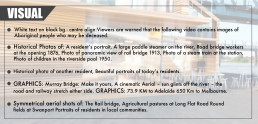

For an example of a script in effect, check out the first 45 seconds of this video redbikini made for the Murray Bridge #MakeItYours campaign, and its correlating script:
Note the differences, how scripts can be adapted and subject to change to achieve the best video outcome possible. Some things cannot be foreseen pre-shooting, language used can be revisited, opportune shots taken, and graphics made more aesthetically appealing and logical.
Depending on the type of video you are looking to produce, the goals, and the audience you have in mind for it, the script needs to reflect this. The scripting process is preceded by a strategy meeting, as discussed in the previous blog post. Having done that, your team and our writers can get creative! This often means sitting down with us and having a chat about the ways in which you want to achieve your goals and the story you want to tell. The video script is best case scenario of the creative vision you want to bring to life.
In our next post of this series, we organise people, places and things with step 3: Pre-production.
Scripting is the fun part! For our talented team here at redbikini, we’re passionate about the video production adventure. If you want to have an obligation-free conversation about your video concept and story-telling ideas with a cutting-edge corporate video production company, give redbikini a call today.
Follow our blog to stay up to date with the latest from redbikini.
GET IN TOUCH
1. Strategy | 7 Essential Steps To Successful Video Production
There’s no denying that video is an essential aspect of content marketing in the 2020s. In this blog series, we are unpacking the 7 Essential Steps of Video Production, beginning here with step one: Strategy.
Perhaps you’ve heard something to the effect of the Five P’s before: Proper Planning Promotes Phenomenal Production.
It’s true: before any video ventures are taken onboard, having a solid strategy in place is the crucial first step of seven. Its importance doesn’t have to make stressful or complex rocket science. Strategy, as we’ve devised it, is founded on two straightforward key aspects, as follows:
1. Determine your goals
It is essential you know from the beginning why you are making the video. Why walk down that path at all? We already know how well video content performs, so it’s time to cater it to you. This should be answered by your goals – or the question: what do you want to achieve with this video?

- If your answer sounds like any of the following:
- “To generate leads”
- “To increase brand awareness”
- “To make more profit”
- “To increase engagement”
Then the path remains dark, without direction.
These goals lack drive, they are without strength. “Goals” like these are hardly goals at all; it’s money-out on wishful thinking, and likely to get you lost in a video-void black hole.
Fortunately, we have a roadmap for a successful video production strategy starting point, illustrating the SMART goal structure. A SMART goal structure sets up your goals to be Specific, Measurable, Achievable, Relevant, and Time-bound.
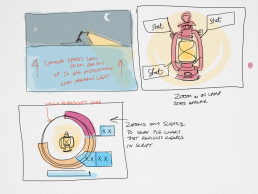

Your video goals need to be Specific. They cannot be as vague as those listed above. Your true goals will answer the questions that arise from those broad ideas, detailing the ends you want and the means by which you will achieve them.
To see results, your goal needs to be Measurable. Considering those previous half-goals: How many leads, and to what end? Increase by how much? How much more profit, by what deadline? By how much do you want to increase engagement, who do you want to engage more, and in what way? By putting a specific number to your goal, your progress becomes measurable. Being able to see your progress removes the blindfold, so you can see the lights that lead you to the realistic end of the tunnel.
Example of a measurable goal: “We want to use video marketing to see a 20% increase in our brand awareness by 1 September this year.”

Speaking of realistic, the goal you set needs to be Attainable. Ambition is always admirable, but there’s no point setting your sights on world domination by the time our next blog post is out, when all it will do is crush your dreams and your drive with the blow of inevitable failure. Keep your feet on the ground and be pragmatic in what is possible, and what is plausible. Increase website traffic by 12% in 12 weeks, increase brand awareness by 40% across Australia, world domination by the end of the year, after a few more tunnels, bridges and highways…
On the note of pragmatism — if it isn’t related to you, your field, and/or doesn’t benefit you, then… What are you doing in this tunnel? Any goal you set out to achieve must be Relevant. Make sure the conversation is about you, and not just about the latest trends. Having a relevant goal will reward you with relevant results, and increase your ROI. Unless you want to give away free money to entertain people — if so, your tunnel just became an escape room.
Finally, put your goal to a Timeframe. Since you have set a measurable goal, you have an idea of when it could be attained. When do you need your video to be made by? How long will the campaign run for? By what date to you want to have those goals met? If having a measurable goal gives you progress lights to guide you, having that end-date in mind is a light at the end of the tunnel.
A SMART video production strategy is a strong strategy: and a strong strategy is understanding and defining (as accurately as possible) what your desired outcomes are. Being able to articulate in detail what pertinent outcomes you want and are able to achieve in a specific time frame is the key. Articulate this key, and you can unlock the halfway door to your video marketing goal.
- Explore your audience.
Now you’ve got your SMART goal organised, next you need to understand your customers, in all their different subsets. It is crucial you determine how they are different from everyone else, and how they are different from each other. Your target audience may be broad and share commonalities, or they may be as individual and niche as a multi-faceted diamond, requiring a bespoke, targeted approach.
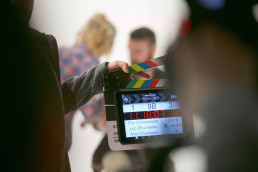
Depending on how you need to reach your audience, your approach could look like one of the following:
- a 10-second vertical video campaign, specific for social media platforms on mobile to drive traffic to your website
- a series of TV commercials to increase brand awareness
- an engaging explainer video to showcase your product and services to call your audience to action, converting them to customers
- a combination of the above, specifically catered to your goals and audience subsets

Within this exploration of your audience, there is a key question you need to have answered:
What is a problem each subgroup of your customers face, for which you (your products/services) are the solution?
With the key of the SMART goals and your understanding of what it is your audience needs that you provide, a video concept is beginning to take shape. The better your understanding of your audience’s pain points, the more effective and engaging your video will become – and that points your path in the direction of the light at its end.
We explore this aspect more in the next blog post of this 7-part series, as we enter into chapter two of video production: Scripting.
Strategy is the just the beginning of a successful video production: the foundation of the path. For our team here at redbikini, we’re passionate about the strategic video production adventure. If you want to have a conversation over coffee about your strategic direction, to understand your audience in-depth, or to refine your business goal with a cutting-edge corporate video production company, give redbikini a call today.
Follow our blog to stay up to date with the latest from redbikini.
GET IN TOUCH
Intro | 7 Essential Steps To Successful Video Production
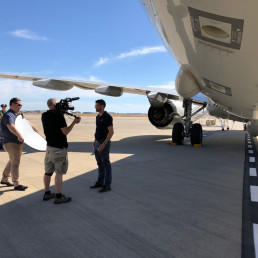
You’ve traversed internet time and space to make it to this blog post, so the odds are you’re considering a corporate video production company to help you market your business, brand, company, product — or absolutely anything else.
A wise move: studies show a consistent demand and preference for video now more than ever (Hubspot, 2017). It’s a vast and exciting creative process, but it can also be a looming, twisting tunnel, with no known end in sight.
There’s no denying the prevalence of video in the 2020s. So, how is your video content performing in this over-saturated market? If you’re struggling to see results, need to clarify your video marketing goals, or just want to know more about what’s involved, then stick around; we’re doing a video production deep-dive, breaking down seven steps essential to a successful video production endeavour.
Perhaps you’ve heard something to the effect of the Five P’s before: Proper Planning Promotes Phenomenal Production.
It’s true. Before any video ventures are taken onboard, it’s important to plan ahead, and the best way to do so is by having a sound understanding of each of these seven steps, taking your video content marketing to the next level.
Step one: Strategy
It is essential you have a solid Strategy in place. An effective strategy is crucial in setting up the video production process for success from the beginning. The strategy stage looks at identifying SMART goals and the diverse subsets of your target audience, so that you may address each of them and their pain points, with you as their solution.
Step two: Scripting
The script describes the audio and visual aspects that the video will contain. This serves as both the creative and practical framework for your finished video, the part of the process where the storytelling begins and the concept is planned. Be it an information-heavy training video or a sharp and exciting TV commercial, a good video script will serve as the foundation for effectively translating the video ideas in your head to an as-realistic-as-possible fruition.

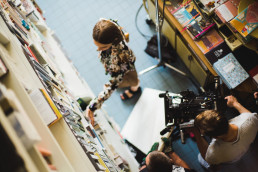
Step three: Pre-production
Akin to planning an event, the Pre-production stage covers the organisation of the people, places and things involved in the execution of Production. Director, producer, cast, production and camera crew, location, gear (cameras, lighting, green screen), props, wardrobe, catering. Anything that needs to be present in the video on the day must be organised in the pre-production stage.
Step four: Production
Production is where the rubber hits the road. The strategy sets up the script, the script sets up the video idea, the pre-production organises the production. With the strategy in place and the script front-and-centre in the production team’s mind, the filming process becomes painless.
Step Five: Editing and Animation
Depending on what needs to be done, this could be completed in a day, or take weeks – every video is different. Editing is where all the raw material is put into the edit suite to create the video detailed in the script. The Animation part of this step can be as simple as text graphics aesthetically superimposed over the footage in your brand font, or it can be complex 3D animation. Once the Editing and Animation stage is complete, we achieve ‘picture lock’, the cut of the video you approve of for the finished product. But it doesn’t end there.
Step six: Finishing and Delivering
Finishing is all about polishing the video. While the visual aspects of the video may be complete, it may require sound design, sound mixing, and colour grading, the importance of which we look into in this blog series. It is the step that takes your video to the next level as it gets closer to publishing. Delivering is where you get to see the changes made to the video since picture lock, before it is called the “finished product”. Changes can be made until you are satisfied with it, and then it’s ready for the last (and definitely not least) important step.
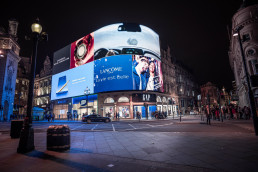
Step Seven: Distribution
Distribution is concerned with getting your polished video in front of the audience that you uncovered back in step one, Strategy. There’s little point investing in all those steps with a corporate video production company if no one is going to see your video. Organic traffic is your free audience, garnered through hard work, creativity, and your time, but an unreliable audience for ROI. Paid advertising optimises the placement of your content for your target audience, advancing your ROI for your video and driving the results you are going after by investing in video production. We look more at the merit of paid distribution in the final blog post of this series.
As we move through this blog series, we will unpack those seven steps essential to video production success even further. That is, Strategy; Scripting; Pre-Production; Production; Editing and Animation; Finishing and Delivery; and Distribution. If you want to unpack the anatomy of successful video content, learn more about your audience and how to make your video perform, then the secrets within this blog series await you.
Follow our blog to stay up to date with the latest from redbikini.
Every week for 7 weeks we will be releasing a one of the 7 steps.
Here are the sections we’ve released so far:

